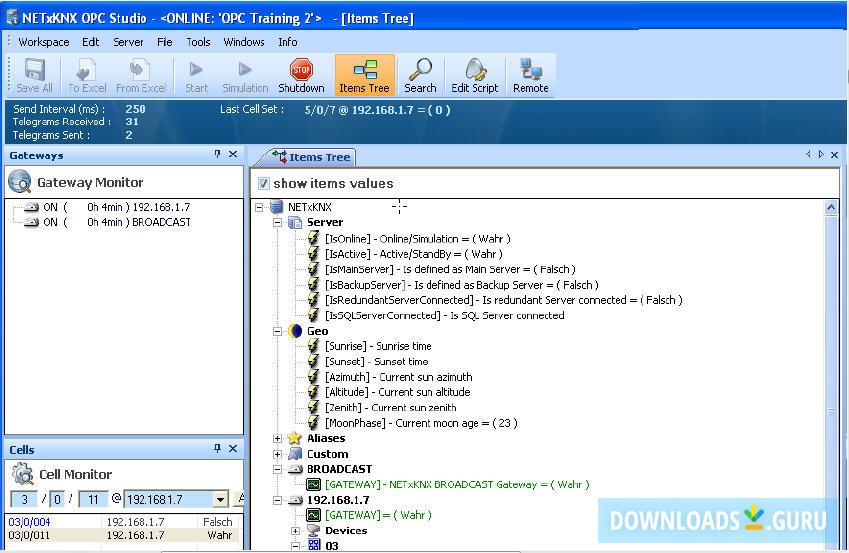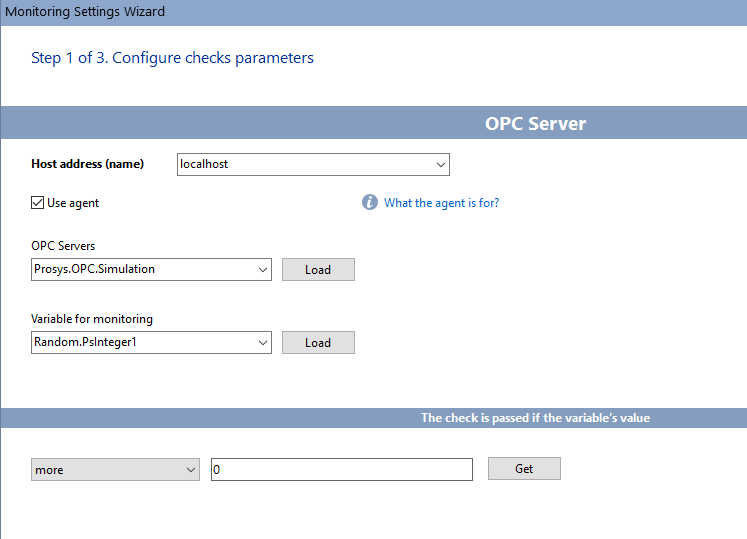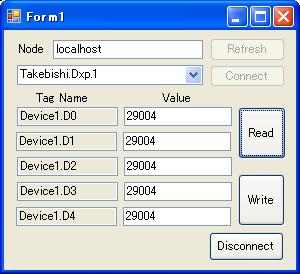
To access the example in LabVIEW, go to Help » Find Examples to open the LabVIEW Example Finder. LabVIEW ships with an example that demonstrates the above process. Starting with LabVIEW 5.1, any version of LabVIEW can connect to an OPC Server as a DataSocket Client.

The DataSocket protocol has an OPC layer, which allows you to read and write to an OPC server using DataSocket. scf file appear as the OPC item names.Ĭommunicate to OPC Servers through DataSocket When you access data from the Tag Engine acting as an OPC server, the client software, such as Lookout or some other OPC client software, sees the Tag Engine as an OPC server named National Instruments.OPCLabVIEW, while the tag names you set in the. scf file is set as the default if you want this type of access. scf file, so you must make sure the correct. The Tag Engine will only use the current. However, an OPC client cannot specify which. The Tag Engine can then load any servers that the tags in that. When an OPC client launches the Tag Engine, the Tag Engine loads the current. At 30 I/O points, you should consider using LabVIEW DSC and the Tag Engine.īecause LabVIEW DSC is an OPC server, an OPC client can launch the Tag Engine. If you are going to have more than 30 I/O points, you will sacrifice efficiency using data sockets. Because LabVIEW Datalogging and Supervisory Control is an OPC Client, it is much more efficient at OPC operations. The LabVIEW DSC Engine (Tag Engine) takes care of OPC for you. OPC Server Functionality is provided by the separate NI OPC Servers software. See Connect LabVIEW to Any PLC Using OPC for more information on this process.Ĭommunicate to OPC Server with LabVIEW DSC 7.1 and previous using the Tag Engine Starting with LabVIEW 8.0, the LabVIEW DSC module extends the functionality of the Shared Variable Engine (SVE) to allow LabVIEW to serve as an OPC DA client. See Using OPC UA Servers and Clients (DSC Module or Real-Time Module) for more information on this process.Ĭommunicate to OPC Server with LabVIEW DSC 8.0 and later using Shared Variables


Starting with LabVIEW 2017, OPC UA Toolkit was released separately from the LabVIEW DSC Module and became a stand-alone LabVIEW toolkit. That’s why Siemens relies on OPC UA as the number-one open interface from the control level to higher-level SCADA, MES, and ERP systems all the way to the cloud.Additional Information Communicate to OPC UA Server with LabVIEW DSC 2013 - 2016 or LabVIEW 2017 OPC UA Toolkit using the OPC UA APIįrom LabVIEW 2013 to 2016, the LabVIEW DSC module contains an API for programmatically communicating with and exchanging data between OPC UA servers and clients. OPC UA can also be integrated into existing Industrial Ethernet networks and can run on the existing PROFINET infrastructure without compromising performance. In addition, PROFIsafe mechanisms are being prepared for OPC UA to permit standardized, safety-related communication between machines. Proven security mechanisms like authentication, authorization, and encryption guarantee a secure connection. With its semantic capabilities, OPC UA supports more than just data transmission: It also contains a unique information model. OPC UA is an important component: The open, platform-neutral communication standard enables seamless communication with third-party applications and can be flexibly scaled to meet specific requirements.

Companies will need convergent, end-to-end, secured networks that are flexibly scalable, dynamically adaptable, and able to accommodate large numbers of users – naturally, with the fastest possible response times. To handle the requirements of tomorrow’s industry, industrial networks will need to be able to meet ever-increasing demands.


 0 kommentar(er)
0 kommentar(er)
